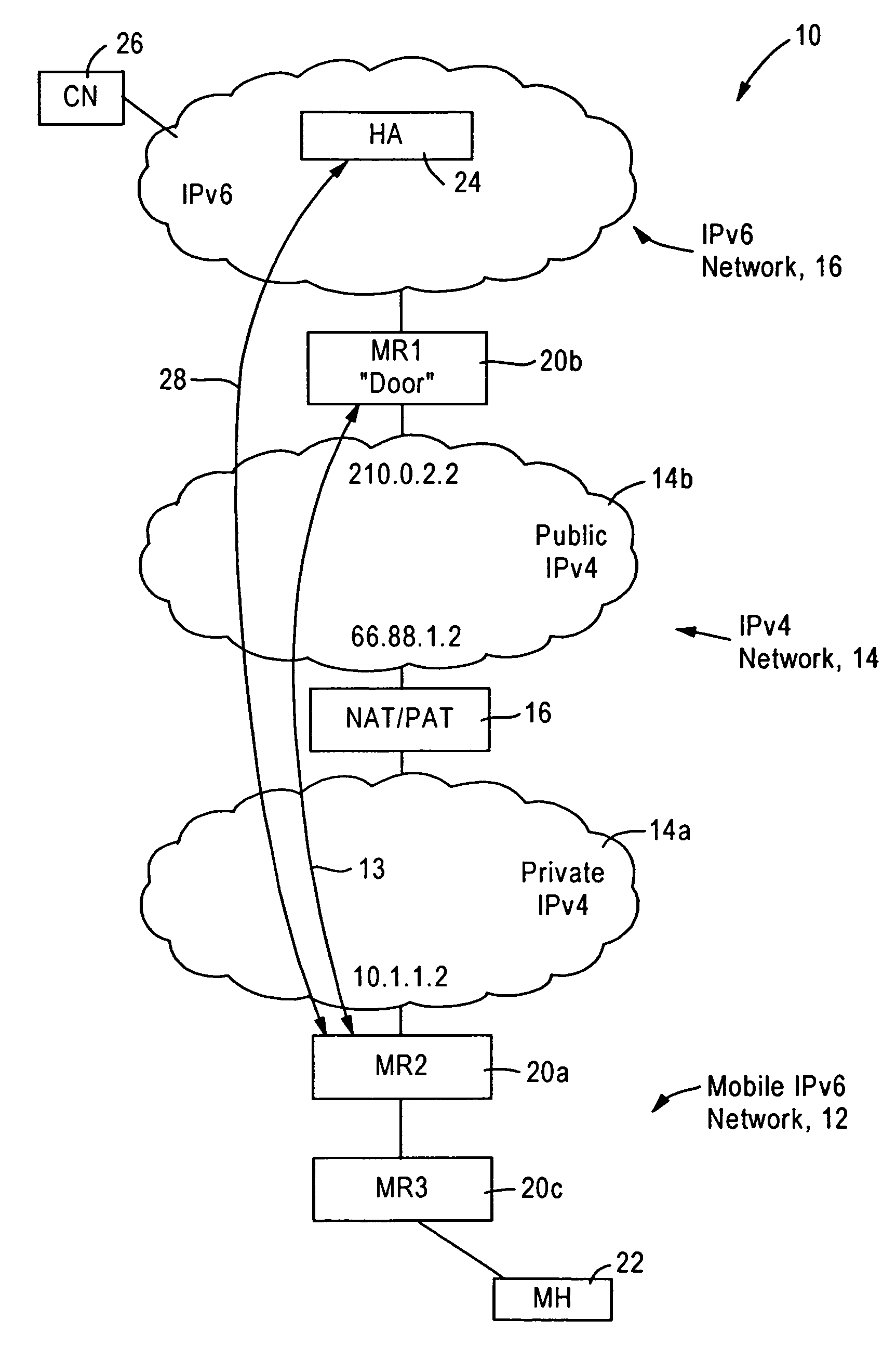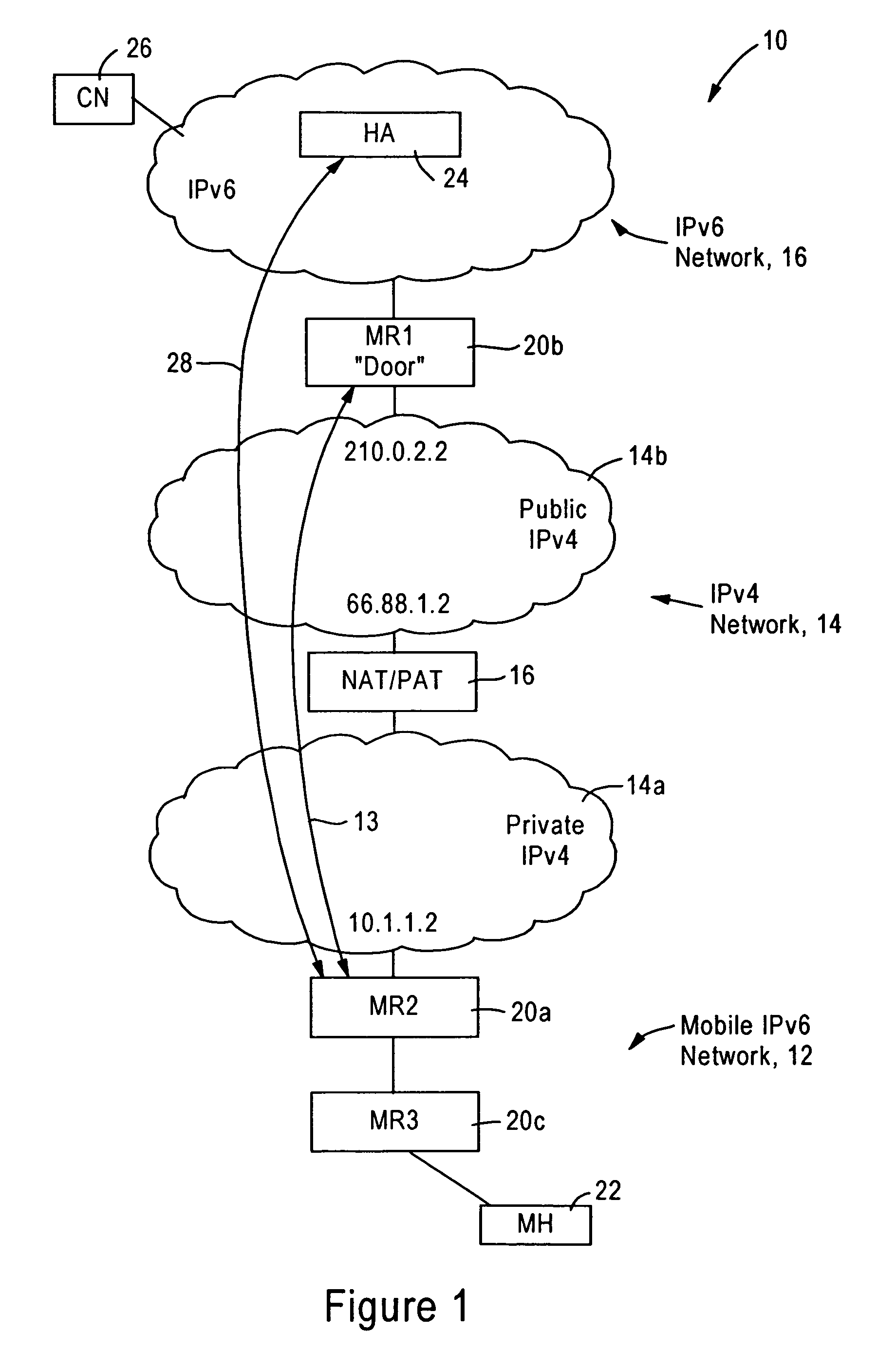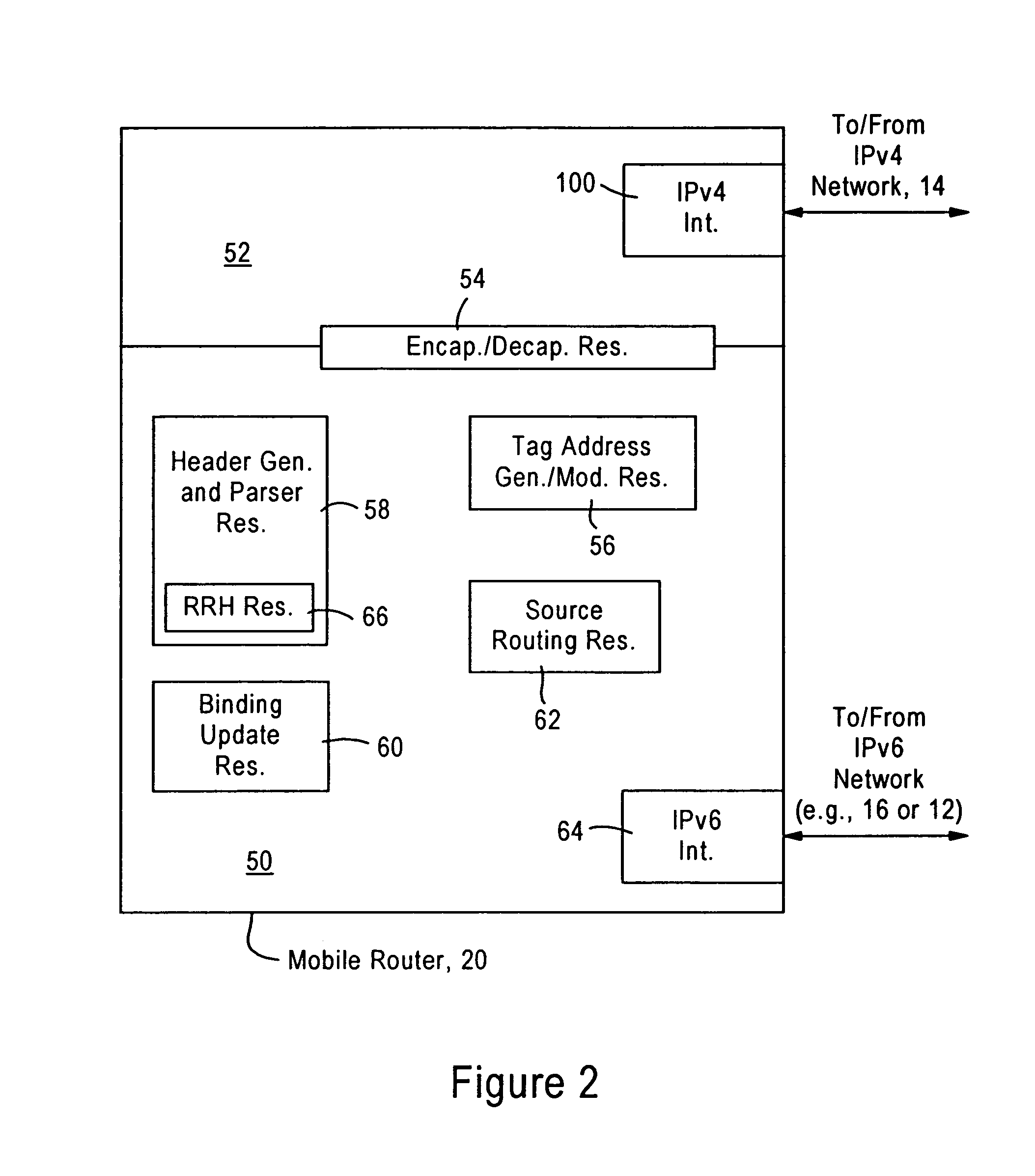Arrangement for traversing an IPv4 network by IPv6 mobile routers
a mobile router and network technology, applied in data switching networks, multiplex communication, wireless communication, etc., can solve the problems of symmetric nats, ipv4 identifier for communications with teredo servers and relays, and may not be practical solutions
- Summary
- Abstract
- Description
- Claims
- Application Information
AI Technical Summary
Benefits of technology
Problems solved by technology
Method used
Image
Examples
Embodiment Construction
[0026]The disclosed embodiment is directed to tunneling IPv6 packets across an IPv4 network based on use of IPv6 based reverse routing headers. The generation and use of reverse routing headers was published on Jun. 19, 2002 by the inventors as an Internet Draft, “IPv6 Reverse Routing Header and its application to Mobile Networks” available on the World Wide Web http: / / www.ietf.org / internet-drafts / draft-thubert-nemo-reverse-routing-header-00.txt and is incorporated in its entirety herein by reference. A more recent version was published Oct. 11, 2002, available on the World Wide Web at http: / / www.ietf.org / internet-drafts / draft-thubert-nemo-reverse-routing-header-01.txt and incorporated in its entirety herein by reference.
[0027]FIG. 1 is a diagram illustrating a network 10, where a mobile IPv6 network 12 is configured for establishing an IPv4 tunnel 13 across an IPv4 network 14 to a destination IPv6 network 16. In particular, the mobile network 12 includes at least a mobile router (M...
PUM
 Login to View More
Login to View More Abstract
Description
Claims
Application Information
 Login to View More
Login to View More - R&D
- Intellectual Property
- Life Sciences
- Materials
- Tech Scout
- Unparalleled Data Quality
- Higher Quality Content
- 60% Fewer Hallucinations
Browse by: Latest US Patents, China's latest patents, Technical Efficacy Thesaurus, Application Domain, Technology Topic, Popular Technical Reports.
© 2025 PatSnap. All rights reserved.Legal|Privacy policy|Modern Slavery Act Transparency Statement|Sitemap|About US| Contact US: help@patsnap.com



